Rune Factory: A Retrospective
It’s hard to believe the Rune Factory series is sixteen years old. Originally developed as a spin-off to the Bokujō Monogatari (aka Story of Seasons) series, the games have had an interesting evolution. The games were developed by Neverland until the studio was shuttered in 2013, but has been revived by Marvelous. It started on handhelds, with games one through three on the Nintendo DS, while Frontier, a sequel to the first Rune Factory, appeared on the Nintendo Wii. Years later, Rune Factory: Tides of Destiny showed up on both the PlayStation 3 and Wii, with Rune Factory 4 on 3DS being the last installment developed by Neverland. With Neverland having shuttered its doors, Hakama became the newest developer for the series, and Rune Factory 5 was released worldwide in March of 2022.
Rune Factory is a farming-sim with action RPG combat, and it is such a charming series. While not every installment is a home run, there’s lots of love within each release. Join Matt and Sam as we share our feelings about this gem of a series, and help you figure out where the best starting point is.
By Matt Masem and Sam Wachter
Rune Factory: A Fantasy Harvest Moon
Available on: Nintendo DS
In the first game in the series, players take on the role of Raguna, an amnesiac who enters the town of Kardia, dehydrated and starved. He meets a girl named Mist, who gives him her farm in exchange for him promising to work the land. From there, the game becomes very open as players can farm, fish, and mine for ore. Players can also explore dungeons, fight monsters, and collect items. The storyline can only progress once Raguna has fully explored a cave and defeated the boss. The story isn’t the most exciting element in the game, but the characters Raguna encounters are delightful and charming. While the visuals weren’t groundbreaking on the DS, there is a lot of nice still artwork and colourful areas to explore.
In 2006, Rune Factory: A Fantasy Harvest Moon was released to decent reviews. The game was praised for innovating its parent series’ formula by adding combat and dungeon exploration, but its execution of those elements left a lot to be desired. The action combat was clumsy, and the hit detection wasn’t always accurate. Still, the ability to explore a fantasy world and woo cute girls had a lot of appeal and this first game served as a great lesson for how the series would progress.
Rune Factory: A Fantasy Harvest Moon may be the first game in the series, but later installments do a fantastic job of updating the formula, so playing this game may not feel very fresh or exciting. Those who are curious about the series’ humble beginnings can start here, though they should be prepared for a charming but unrefined experience.
Rune Factory 2
Available on: Nintendo DS
Rune Factory 2 is a mixed bag. While someone people found the game on par with other DS titles, Sam didn’t sugarcoat her feelings for this game. Rune Factory 2 was released in 2008 and was a great example of how not to make a sequel. This DS game was chock full of localization errors and tons of noticeable lag. This game lacks polish so much that we find it hard to recommend to anyone looking to jump into the series.
Starting with a new amnesiac hero, players are transported to the town of Alvarna. There they meet a farmer named Mana and her overprotective father named Douglas. While Douglas does not trust our hero, he gives the protagonist a farm and tells them to make use of the land. From here, the story begins and we are introduced to a lot of uncomfortably youthful marriage candidates, and even a cougar! In order to woo the woman of their dreams, players are tasked with completing sidequests to get to their eventual bride. Farming also takes a huge backseat to monster hunting in this game, as farming isn’t profitable compared to slaying beasts.
This game also spans two generations, which is one too many given how boring the story and the characters are. While the first generation is all about finding a bride, the second involves the main character searching for their father, forced to replay all the dungeons to find clues. The town serves no purpose in this second generation, and there are no reasons for players to interact with the townspeople other than to buy items for their dungeon crawl. This is coupled with the amount of lag throughout the game, which makes moving through areas or fighting enemies feel like a chore. Rune Factory 2 is such a mess, and it never finds its balance, instead being a tedious slog where nothing offers any true payoff.
Though its reviews average a score similar to those of other Rune Factory games, given all the performance issues, poor localization, and boring structure, Rune Factory 2 feels impossible to recommend to anyone as a starting point or even a midpoint of the series. Those who are curious about this installment can get a copy of it used for around $25.
Rune Factory 3
Available on: Nintendo DS
Rune Factory 3 gets a lot of unnecessary hate, and yet of the three Nintendo DS titles, it’s Sam’s favourite. Sure, transforming into a wooly is weird, but it’s oddly charming and works well with the gameplay. Taking on the role of Micah, another amnesiac hero, players are introduced to the townspeople of Sharance, and goodness they are a quirky bunch! But Micah also has a deep secret: he can transform into a wooly! How can he woo the ladies and be a wooly at the same time? Well, it’s complicated.
Rune Factory 3 is a huge step up, gameplay-wise. The combat is more refined; the hit detection, though not perfect, has improved greatly; and the world feels full of life. There are also so many sidequests to take on, and they are a great way to help woo your potential partner. The game has magic and special weapon abilities that could allow players to tailor Micah to their own personal playstyle. Farming doesn’t take as hard a backseat as it did in Rune Factory 2, and players could now grow fruits and veggies in dungeons, even if they were out of season. Crafting was also very easy and approachable unlike to the tedious systems present in the previous games, and overall there are just a lot of great quality-of-life improvements.
Rune Factory 3 is a great game that takes a lot of the good and the bad from the previous games and creates a much more refined experience. While the wooly angle is silly, the characters and the game’s story of trying to restore Micah’s humanity are fun and refreshing. Of the three Nintendo DS titles, Rune Factory 3 is the best one to start with as it irons out a lot of the main kinks from the previous installments. However, it’s also the rarest of the three DS games, fetching a price easily over $150, making it a bit more challenging to obtain.
Available on: Nintendo 3DS
Rune Factory 4 Special available on: Nintendo Switch, PC, PlayStation 4, Xbox One
Rune Factory 4 marked the series’ entry into slightly higher quality graphics, first with the move from DS to 3DS, and more recently with the updated Special version coming to Switch and then other platforms. Players take on the role of a hero unceremoniously tossed from their airship in the opening moments of the game and mistakenly identified as royalty by the inhabitants of the town they land in. As is the case in these titles, soon players are farming, fighting, and forging relationships while solving issues of local, regional, and worldwide importance. Rune Factory 4 is divided into three large story arcs, with the first two being considered the main game and the third being a de facto post-game.
Along with the move to a new console, Rune Factory 4 introduced some new components to the series. Two townsfolk or monsters can be brought along with players as they explored dungeons as opposed to only one in the previous titles; even boss monsters are recruitable. Players were given Prince/Princess points for completing a wide variety of tasks that could be spent on town improvements, adding town festivals, or unlocking additional game features. Instead of just having heart events available with love interests, town events were available that encompassed multiple NPCs at a time and lasted for days.
Rune Factory 4 originally released to generally favorable reviews on the 3DS and even better reviews years later on Switch. Today it’s the most readily available series title, with 3DS physical copies still going for $30, with the updated version out on all modern consoles for that same price point or less. The title has most of the modern quality-of-life improvements the series has to offer, and with multiple story arcs players can walk away feeling relatively satisfied after each, so 75+ hours don’t have to be devoted to playing this one.
Available on: Nintendo Switch
Our series retrospective concludes with the newest title in the series, Rune Factory 5. While the protagonist yet again suffers from amnesia at the beginning of the game, veteran series players will feel more of a sense of déjà vu: soon after mysteriously appearing outside the town of Rigbarth, they’re welcomed and given room and board in exchange for some farm work. The hero also joins the local branch of Seed, an organization dedicated to meeting the requests of various townsfolk and keeping them safe from local monsters. The story follows the typical JRPG structure of saving the town, fixing regional issues, and saving the world, but does so in the laid-back manner the series is known for.
Sadly, despite releasing half a year after its Japanese version, the western release is riddled with the same frame rate issues. But aside from that, the game is a marvelous return to the ARPG farm-sim life for a series that was thought to be dead and gone for the better part of a decade. The series is moved forward with improvements such as being able to bring three monsters or NPCs into battle, a slowed-down in-game clock, and more signposting for town events. The selection of bachelors and bachelorettes is no longer linked to the gender players choose at the start of the game as Rune Factory 5 is the first series title to allow same-sex relationships.
While the frame rate issues do pull the overall review scores down, we here at RPGamer enjoyed it well enough. Considering the development team is new to the series, its first effort at making a Rune Factory game is a success. It has all the gameplay elements of older titles as well as the charming cast of characters that typically inhabit the games. For those that have never played a Rune Factory title before, the game is well worth the price. If neither cost nor frame rate issues form a barrier, Rune Factory 5 is a fine title for new players to jump into the series with.
Rune Factory: Frontier
Available on: Nintendo Wii
Frontier marks the series’ debut on a console larger than the Nintendo DS and its first foray into a 3D setting. It’s also a direct sequel to the original Rune Factory, once again starring Raguna, who’s been wandering the world looking for his friend, Mist. Eventually, he makes it to the rural town of Trampoli where he settles down and does what he does best: raise up crops and chop down monsters. Not only are all of the familiar trappings of the series presented here, like seasonal dungeons, farming, livestock, and more, but an interesting sentient rock whale island stays permanently moored above the town, providing some story dungeons and even more farmland to maintain.
For the most part, Frontier is a great step into 3D for Rune Factory. The game looked nice in 2009, and even today evokes what a good Wii or PS2 title should look like. The game was reviewed very well back when it debuted, on RPGamer and elsewhere. Compared to the DS and 3DS entries that came before, the 3D environments seem huge, which is both a blessing during exploration and a curse when in town, as the place seems devoid of life most of the time, with only the rare NPC seen out and about. While the series staples are all as good as previous entries, a new system based around elemental Runeys makes this title a bit more annoying. Maintaining a balance of rock, water, tree, and grass spirits in eight different zones around the area map is a challenge that needs to be addressed lest they negatively affect the rate of crop growth.
Frontier is a perfectly fine place to jump into the Rune Factory series if you still have your Wii up and running and would prefer to play the series more on the big screen. The game is readily available on the secondhand market for perfectly reasonable prices. The Runey system was never used again for good reason, but if players can handle it, Frontier could be the game for them.
Rune Factory: Tides of Destiny
Available on: Nintendo Wii and PlayStation 3
Tides of Destiny followed closely upon the heels of Frontier, releasing on the Wii and the PS3 in 2011. While the game was panned quite widely by reviewers, including here at RPGamer, many fans took the game in stride and found it as enjoyable as the rest of the series. As the name implies, Tides of Destiny takes place in a more oceanic setting. Players control male and female protagonists Aden and Sonja, living on Fenith Island and traveling to other islands on the back of a giant plant golem named Ymir.
As with all other Rune Factory titles, the gameplay loop of Tides of Destiny involves farming, befriending the locals, and fighting one’s way through dungeons. The farming gets a little twist in this title, as tilling the land and planting seeds is replaced by a system that revolves entirely around recruiting and becoming better friends with monsters. Monsters do all the dirty farm work on one of the four seasonal crop islands, allowing players more time to explore the seas on the back of Ymir, pulling up islands from the seabed, fishing off his shoulders, or battling large sea creatures. The reduction in time spent farming isn’t necessarily a good thing as that leaves more time for combat, and combat is the main area that’s a common complaint about this title. Poor hit detection and an action combat system that’s not much more than a button-masher is never a good blend. Pairing this with mini-games being required for every aspect of the deep crafting system see players spending a little too much time on the more uninteresting aspects of the game.
Although it’s relatively easy to find and cheap to purchase as a used title, Tides of Destiny may not be the best starting point in the Rune Factory series as the farming is quite a bit different than in the rest of the series. It’s also important to note that there is quite a difference between the two console versions as the Wii version requires players to use both the Wiimote and Nunchuck, with some commands mapped exclusively to motion controls.
We hope you enjoyed our retrospective of the Rune Factory series, and that it has been informative in terms of how the series has evolved since its creation in 2006. Which Rune Factory game was your favourite? Join the conversation by dropping a comment below!
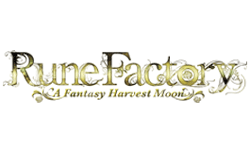








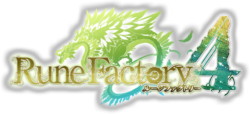





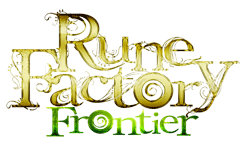


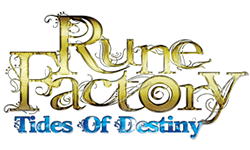



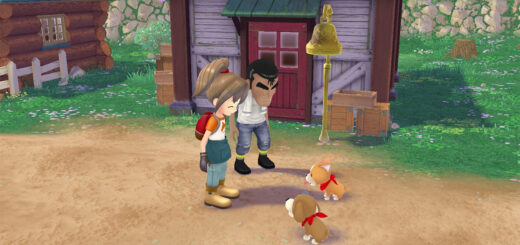




Recent Comments